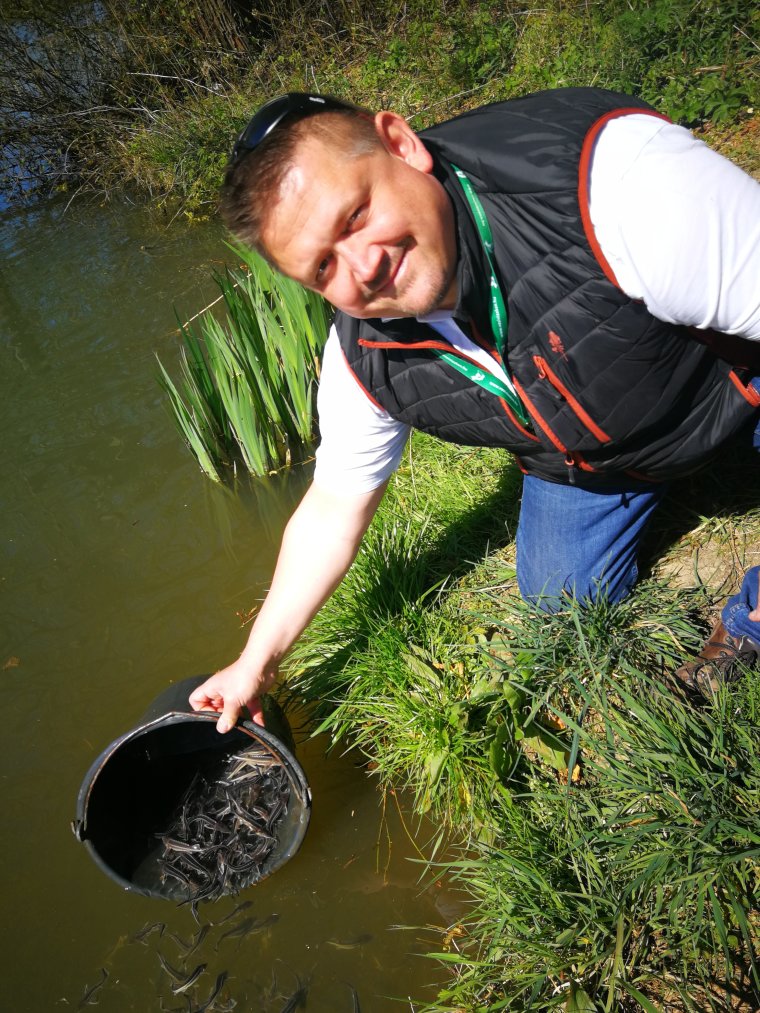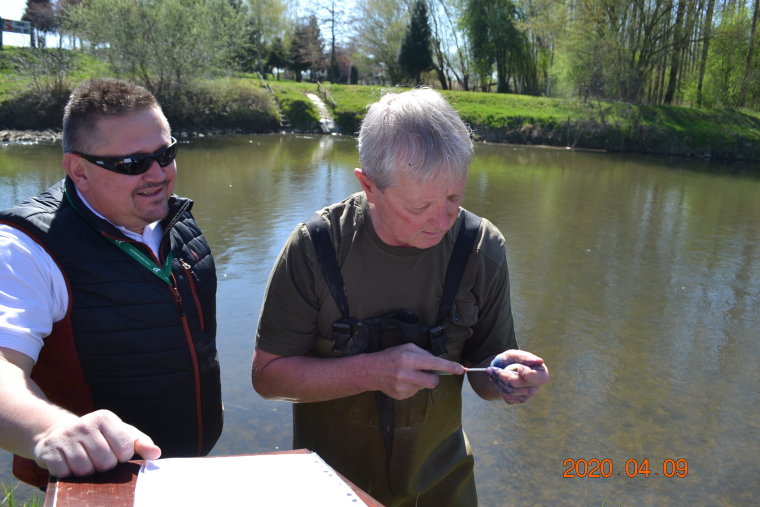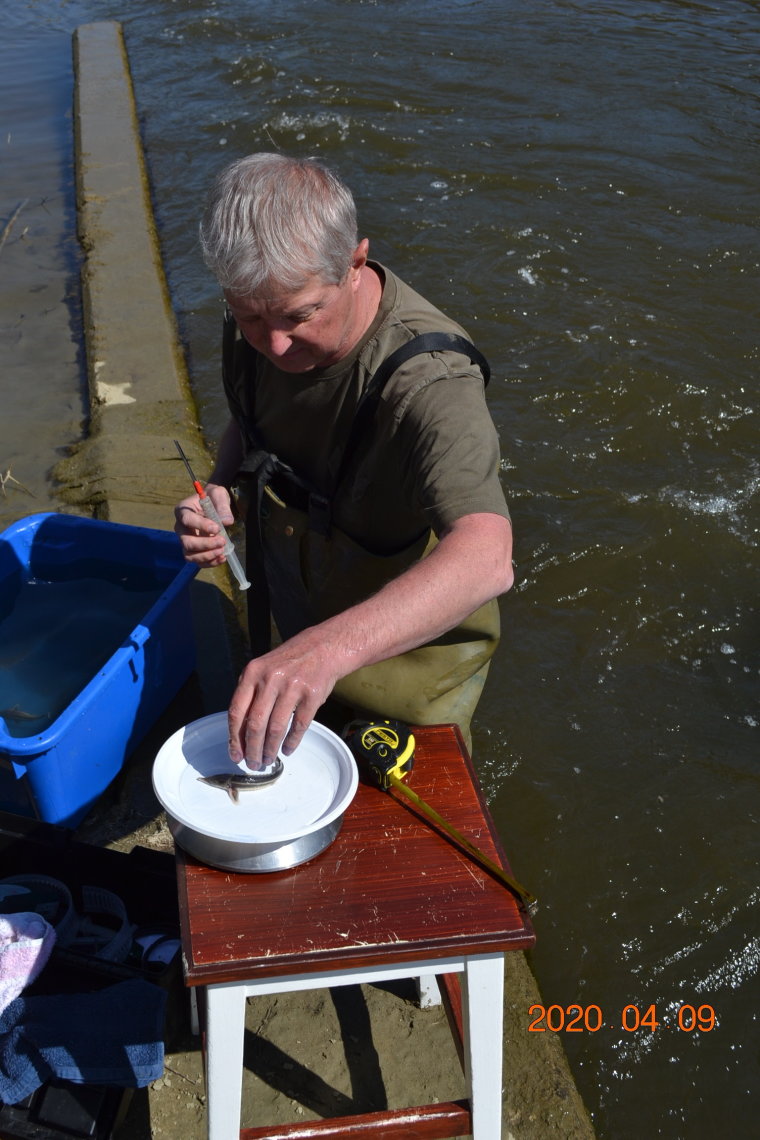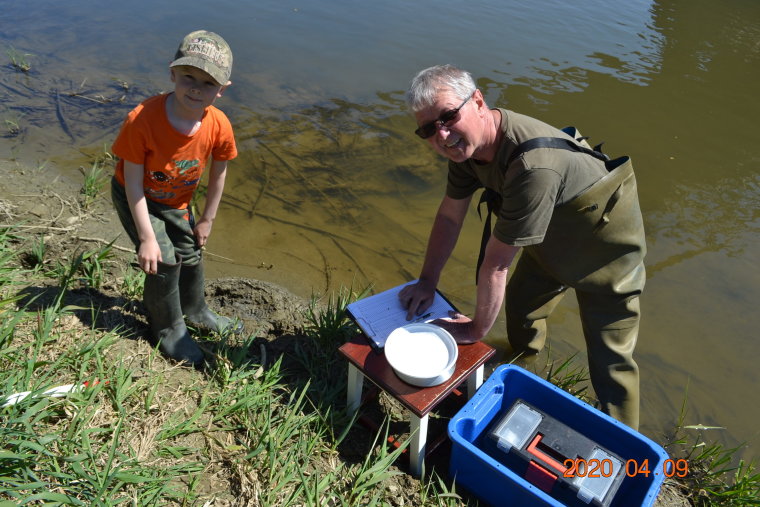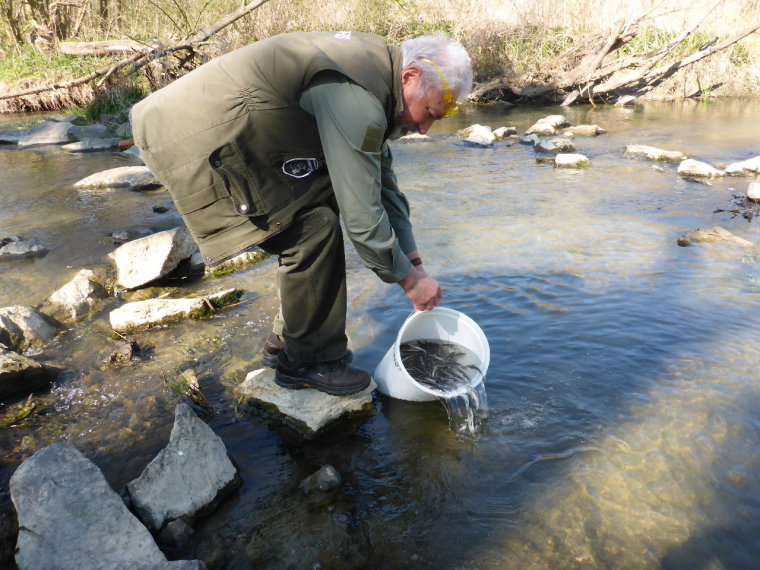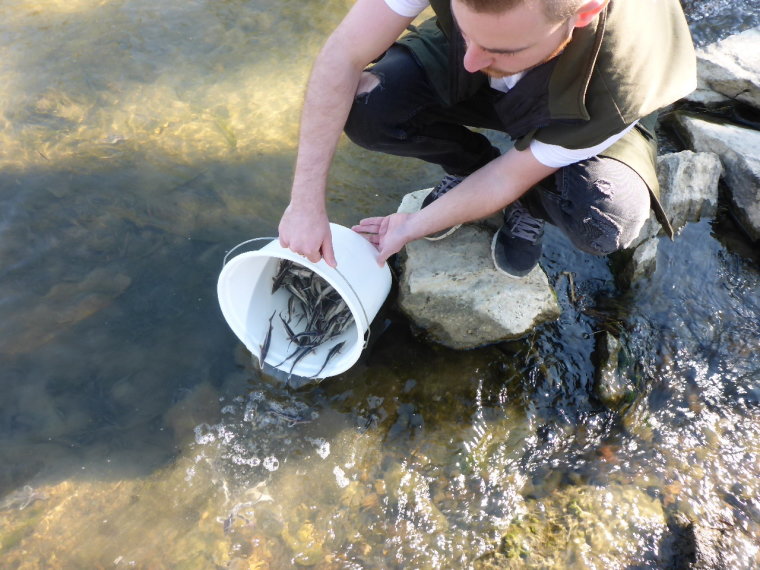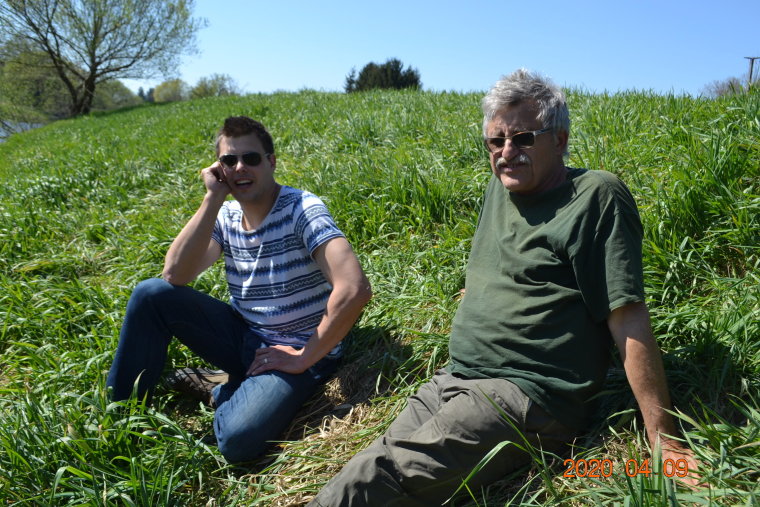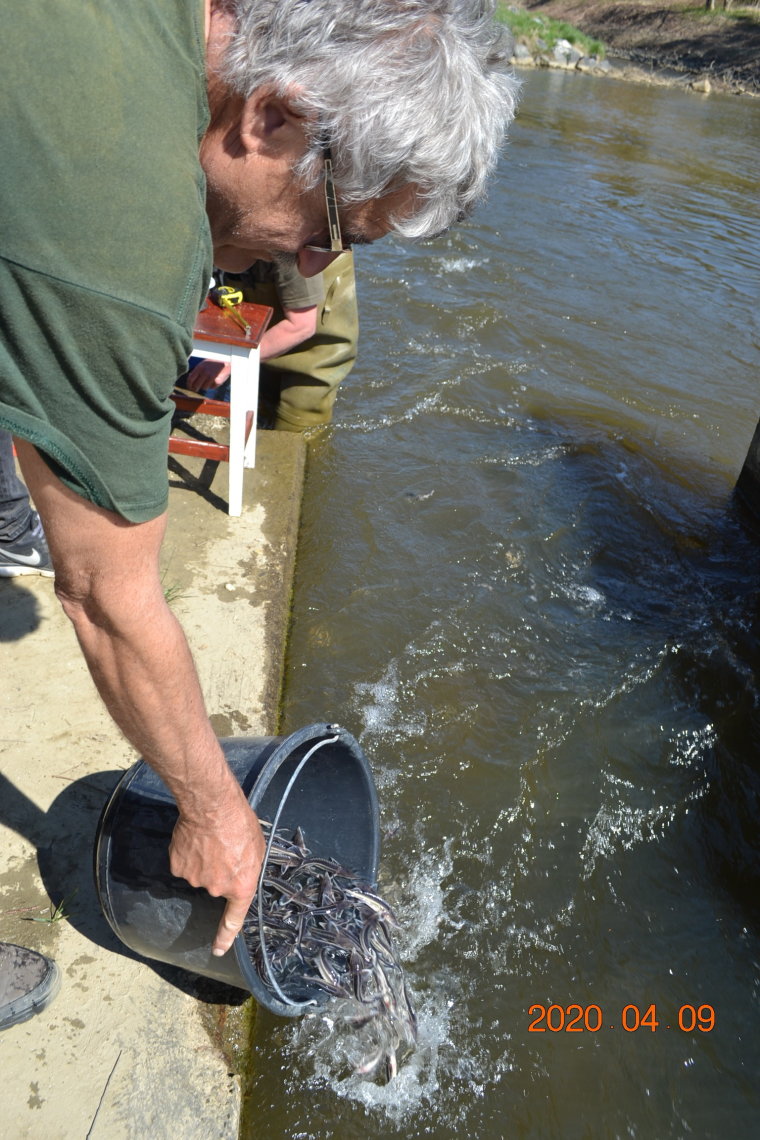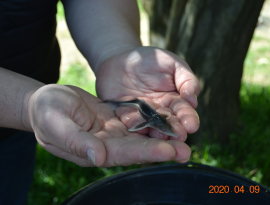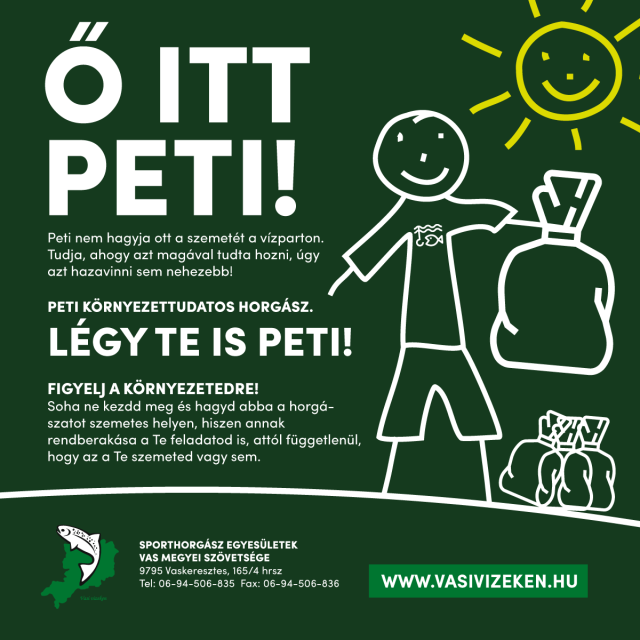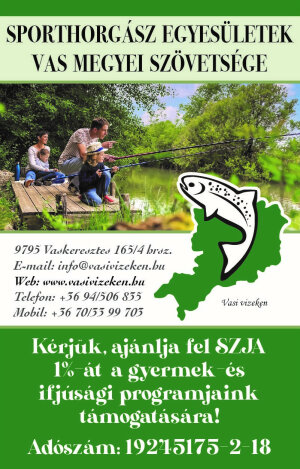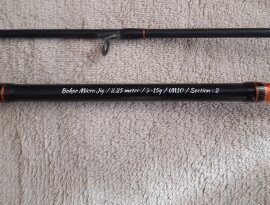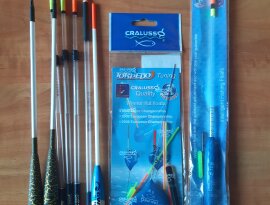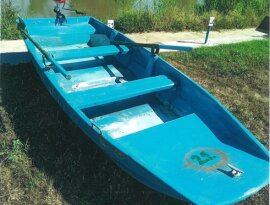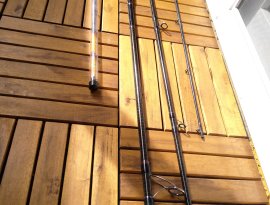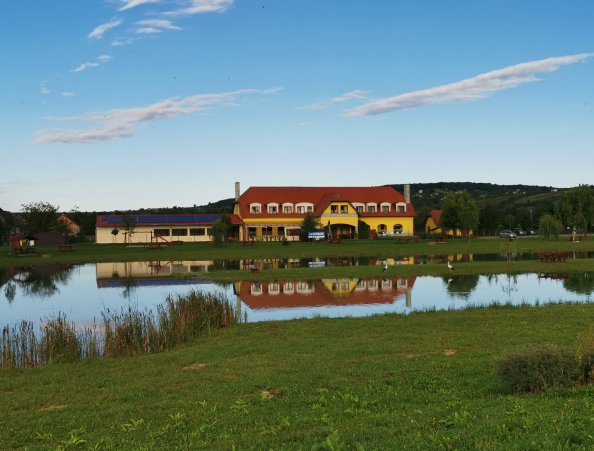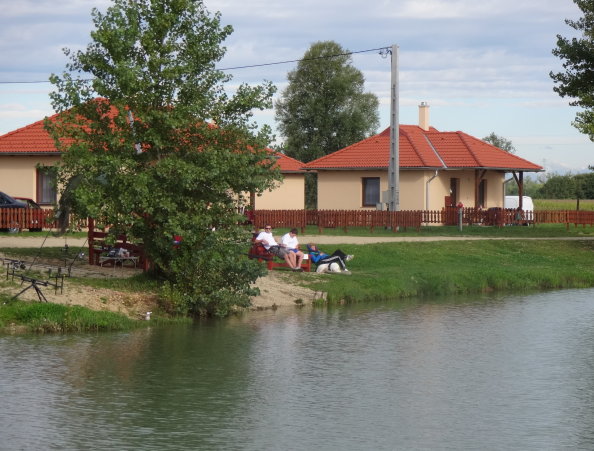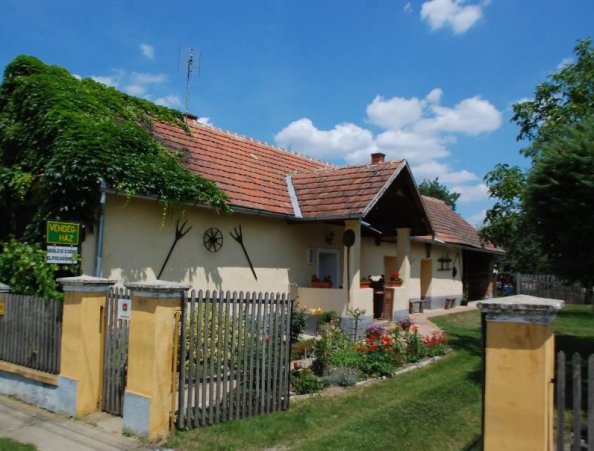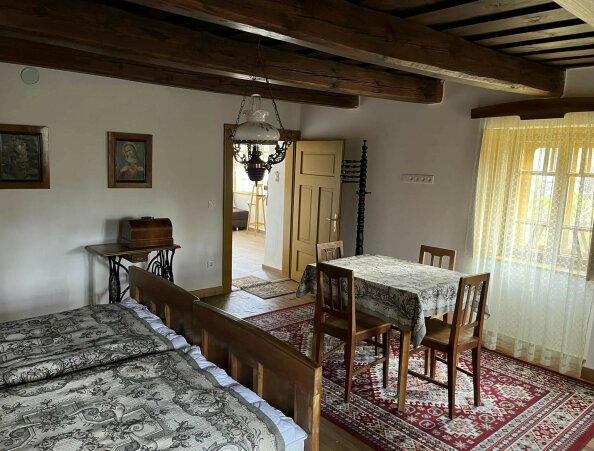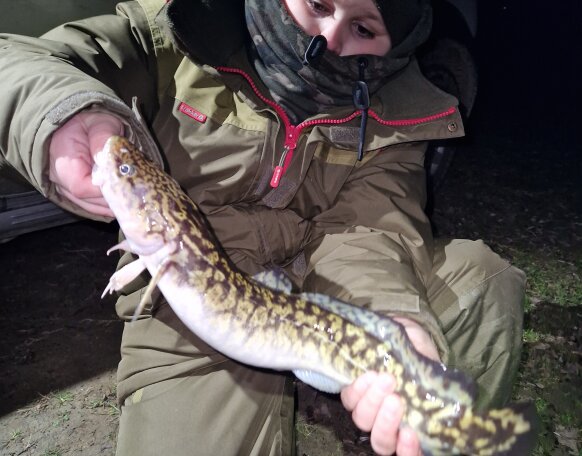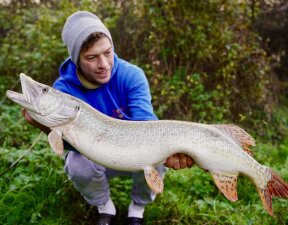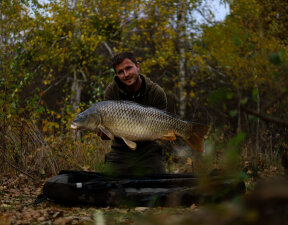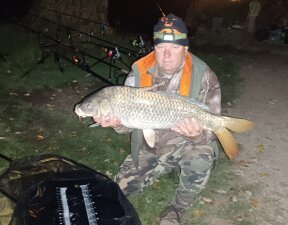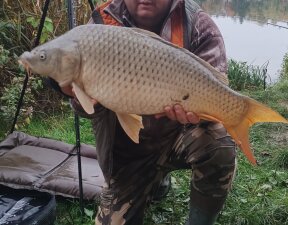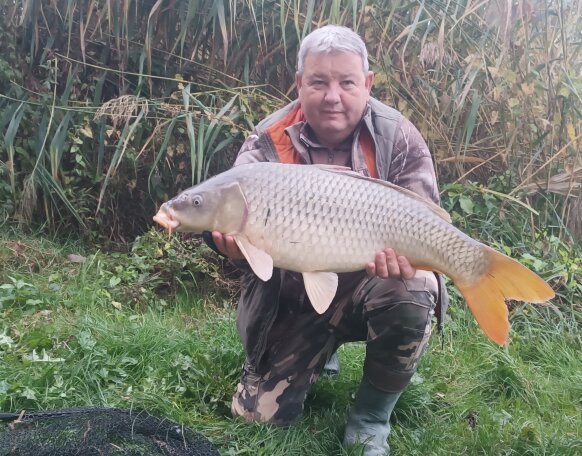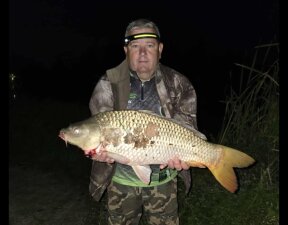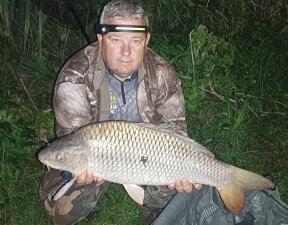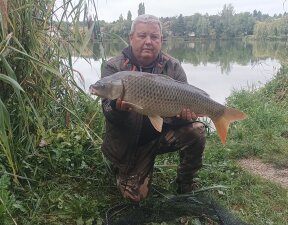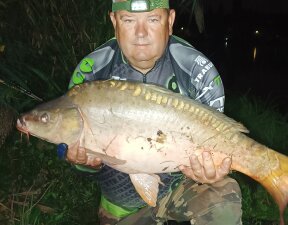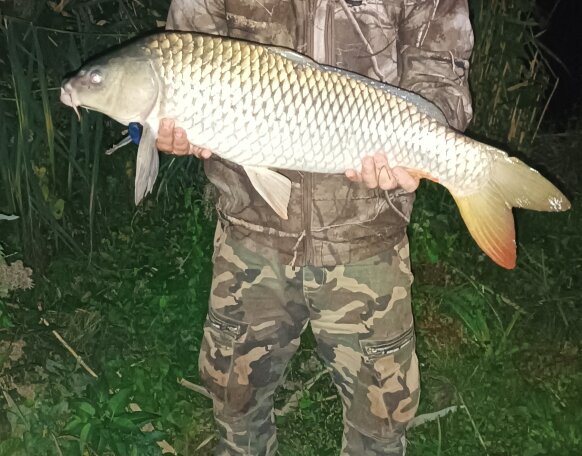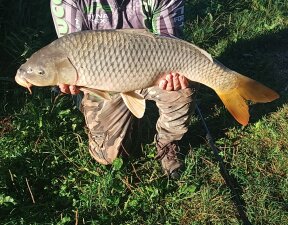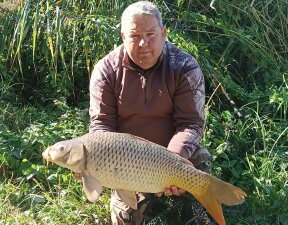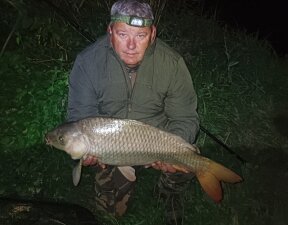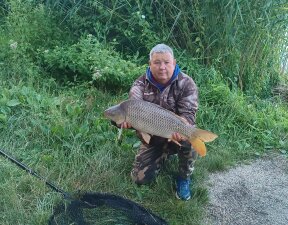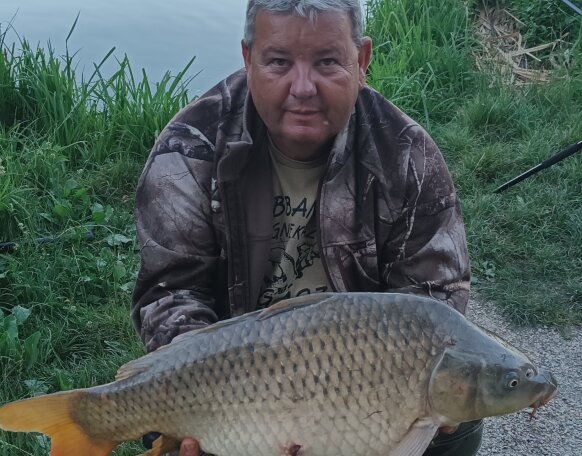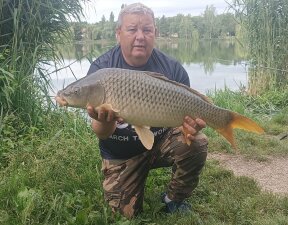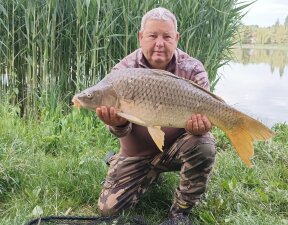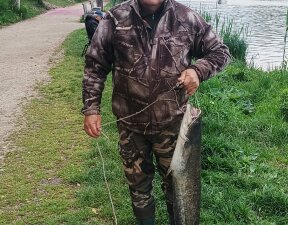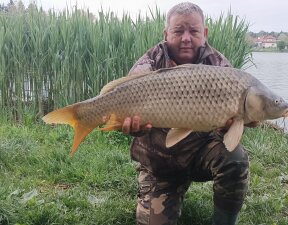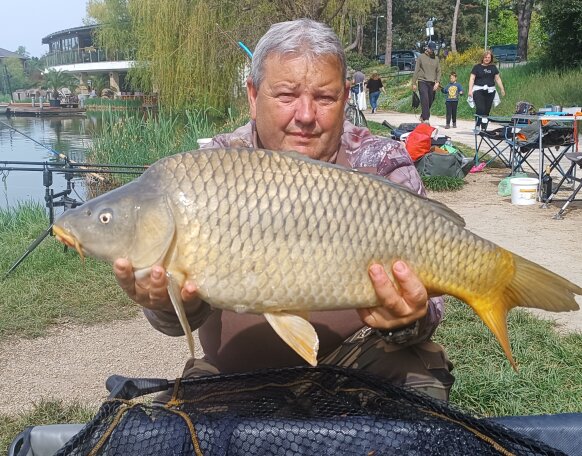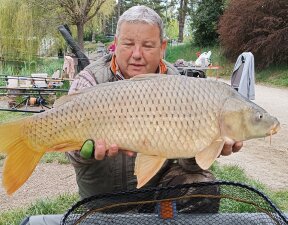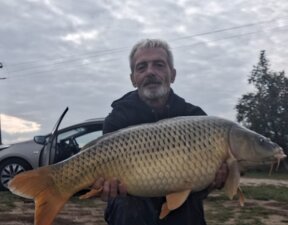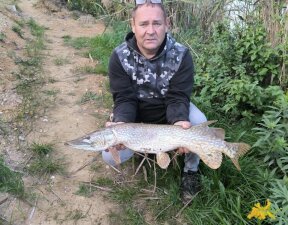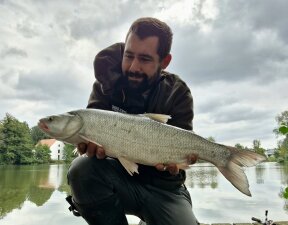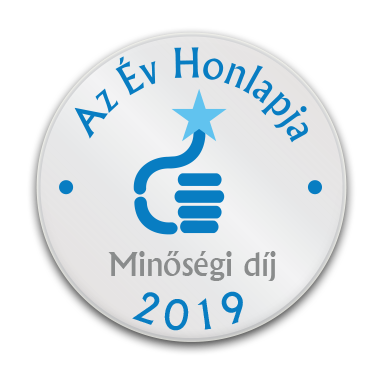4000 goats arrived in the river Rába
Life did not stop during the coronavirus epidemic period on the shores of the iron waters, fish shipments arrive almost daily to the great delight of anglers. During the spring deployment, carp and other whitefish have so far entered federal fishing waters in quantities in excess of nearly 45 tons.
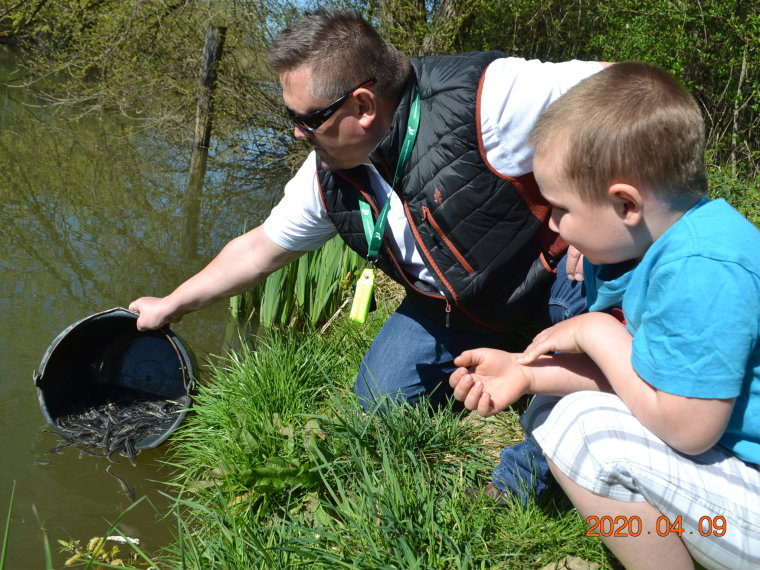
On Thursday, a pre-grown goat was planted by the Vas County Association of Sport Fishing Associations at several points in the Vas County section of the Rába River. - said Norbert Puskás, the executive chairman of the organization. The goat is a typical Hungarian representative of the pods, which adapted to the freshwater lifestyle during their migrations from the seas to the river waters, and is found primarily in the water system of the Danube and the Tisza in Hungary. The pods are characterized by a long body adapted to flowing water, a disproportionate tail fin, an elongated nose, a low-lying mouth and mustaches, which, in addition to nutrition, also help in species identification.
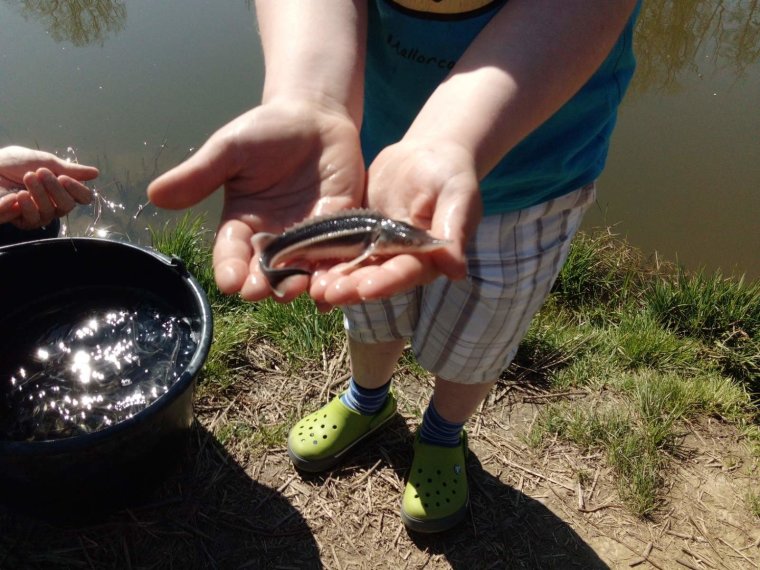
Unfortunately, in most of our rivers, its stock has become scarce, and its specimens can only be considered as occasional guests, so the - experimental - installation on the Rába River is of particular importance. The heron, despite being a freshwater species, has a characteristic tendency to migrate to sturgeons, so they can travel long distances while roaming, depending on the permeability of riverbeds and dams. Here, too, we have come to the greatest problem of the reproduction of most sturgeon species, that is, the prevention of migration from the seas to freshwater by dams and power plants, which has resulted in a drastic reduction in the number of migratory sturgeon species. - informed József Mesterházy, the leader of the association's fisheries management team
The Őrség National Park Directorate has been examining the efficiency of fish ladders in Vas County since last year within the framework of the Interreg project entitled “Development of the ecological network of WeCon – Wetlands in the Austro-Hungarian border region”. In line with the objectives of the mentioned project, more than 100 of today's goat placements became chips at Rábahídvég, Körmend, Szentgotthárd and Alsószölnök with the participation of fisheries expert Jenő Horváth . The individual weight and size of the fish were also recorded on the chips with a unique identifier.
At Szentgotthárd and Alsószölnök, the success of the vultures on the fish ladder can also be examined by the fish marked with a chip on the downstream side, because this is in fact automatically documented with the chip reading antenna placed on the surface. Gábor Fera, a zoologist from the Őrség National Park, was also present at the placement carried out by the Vas County Association of Sport Angling Associations.
It is also necessary to know about his promise that instead of scales, the so-called a characteristic fish species covered with blood was never common in the Rába, but, according to older anglers, it delighted one or two persistent river pecs as occasional prey even in the 1980s. Its primary habitat is the deeper section of the rivers, but during its migration it also visits the more tortuous, gravelly parts, especially during the late spring breeding season. Its food consists of smaller molluscs, aquatic invertebrates and mainly insect larvae in the mud of the water bottom.
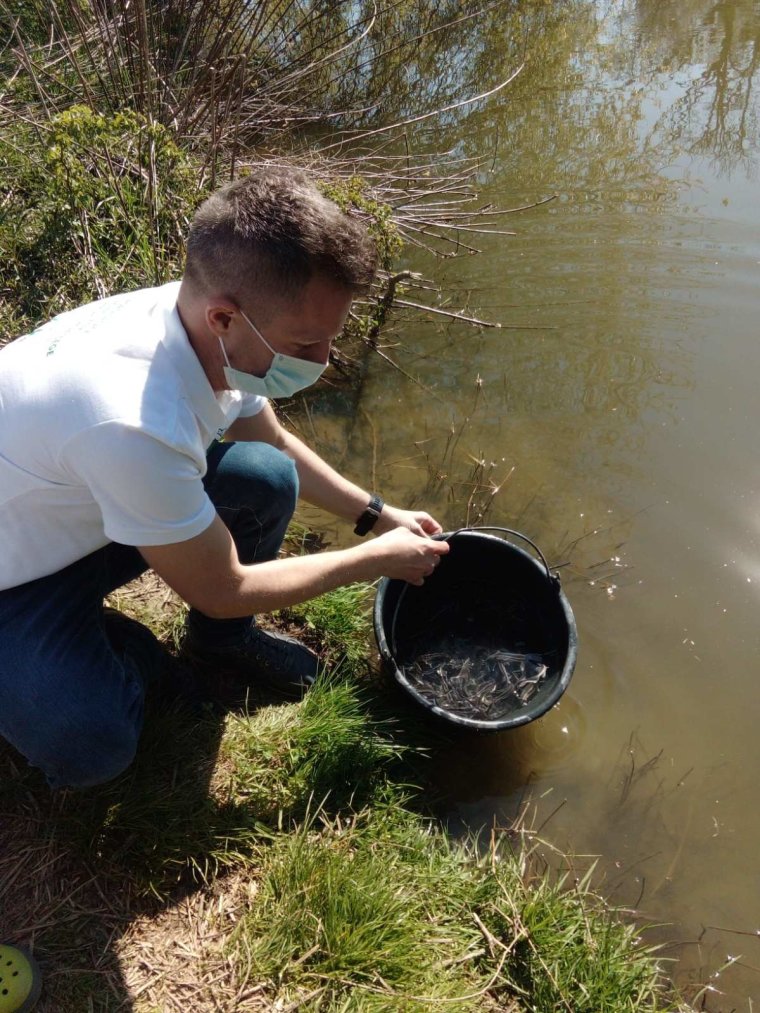
Due to the decrease in the number of individuals of the species, although it is not under nature protection, the fish protection legislation removed it from the list of catchable species from 2014, currently the so-called an endangered species of Community importance. This means that only a certain number of specimens in excess of 50 cm can be caught with an official permit and only in water areas where it has a stable stock or is regularly planted by a person entitled to fish farming. On the Rába River, this fish species is currently, but is not expected to be kept in the future.
The aim of the installation in Rába is primarily to color the fish stock of the river with a previously present native species, and to gain experience on the proportion of larvae that have been introduced on different sections and which sections are preferred. Of course, there are a number of dangers lurking for the established vultures, among which the presence of large cormorants from autumn to spring can be highlighted, which is a bird species e.g. one of the biggest pests of the Danube goat population. The cylindrically-bodied, bottom-loving crust of the troops is easily and fondly captured by the extremely skillful fishing bird.
The experience of the establishment determines the possibilities of further establishment of the Rába River, however, we hope that the domestic fish production - in addition to maximally serving the needs of carp anglers - can help maintain the biodiversity of natural waters by raising more and more native fish species.
H&H Carpio Halászati KFT, a farmer in Ócsárd, Baranya County, has installed 4,000 pre-bred vultures. he was brought up and transported to Vas County. The breeding of the goose and its upbringing under intensive conditions also takes place in our own enterprise, we learned ifj. From Dr. Zoltán Horváth . According to experience, the survival of intensively farmed perch and goose specimens can be said to be excellent, and based on their instincts, they quickly switch to a natural diet, in which their excellent condition and parasite-freeness also help them.
The installed vultures were placed on the entire Vas county section of the Rába from Sótony to Alsószölnök, mainly on the dammed sections. The Association conducting the installation asks the anglers to gently release the small caught specimens that may have been caught after a careful release of the hook, or to notify the Association of their objection at info@vasivizeken.hu or by phone 94 / 506-835.
